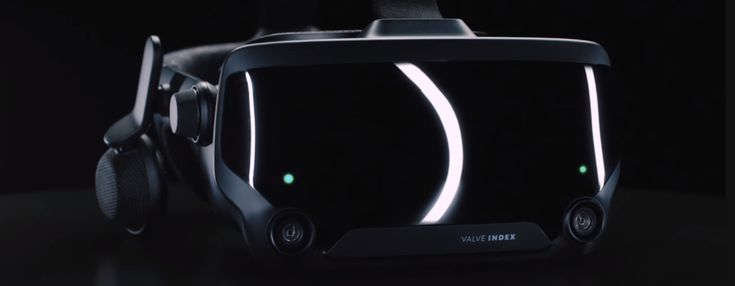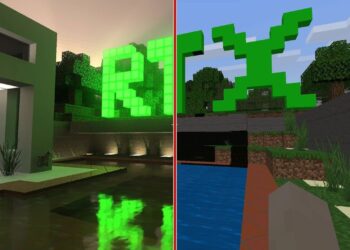The world of virtual reality has officially moved past its “promising but niche” phase. As we navigate the landscape of late 2025, VR is no longer a fringe hobby for tech enthusiasts; it’s a rapidly expanding ecosystem touching everything from hardcore gaming to professional workflows and social interaction. The pioneers like the original Oculus Rift are now relics of a bygone era. Today’s market is a battleground of titans, with established devices like the Meta Quest 3 and the groundbreaking Apple Vision Pro setting a new baseline for what’s possible.
But the relentless march of technology waits for no one. The true excitement lies in what’s just over the horizon. The next generation of virtual and mixed reality headsets is poised to deliver leaps in immersion, clarity, and usability that will make even current top-tier devices feel dated. Whispers from supply chains, patent filings, and developer kits are painting a vivid picture of the future, a future defined by crystal-clear micro-OLED displays, seamless mixed reality, and intuitive, powerful standalone performance.
This is your definitive guide to that future. We are diving deep into the next-gen VR contenders, comparing the rumored specifications, design philosophies, and potential software ecosystems of the headsets that will define our virtual experiences for the rest of the decade. From Meta’s next mainstream champion to Apple’s refined powerhouse and Sony’s console-driven dream, we’ll dissect every component to help you understand where the industry is heading and which device will ultimately be worthy of your investment.
Understanding the Core Technologies of Next-Gen VR
Before comparing the headsets themselves, it’s crucial to understand the key technological advancements that separate “next-gen” from the current generation. These are the foundational pillars upon which the future of VR is being built.
- Display and Optics: The single most important factor for immersion. The industry is moving away from traditional LCD panels.
- A. Micro-OLED: This is the game-changer. Unlike LCDs, which use a backlight, or even standard OLED, micro-OLED panels offer per-pixel illumination on a microscopic scale. This results in perfect black levels, an infinite contrast ratio, and incredibly vibrant colors. More importantly, they allow for a much higher pixel density (Pixels Per Degree or PPD), leading to a drastic reduction in the “screen-door effect” and a visual fidelity that approaches retinal resolution.
- B. Pancake Lenses: The bulky Fresnel lenses of older headsets are gone. Pancake optics are thinner, lighter, and offer a much larger “sweet spot” of focus, meaning the image is sharp across more of your field of view. This technology is critical for creating smaller, more comfortable headsets.
- C. HDR (High Dynamic Range): Just like in premium TVs, HDR in VR allows for a much wider range of brightness and color. This means brighter highlights, deeper shadows, and a more realistic and breathtaking visual experience.
- Processing and Performance: The brain of the headset.
- A. Standalone Power: Mobile chipsets, like Qualcomm’s Snapdragon XR series, are becoming incredibly powerful. Next-gen standalone headsets will boast processing power that rivals last-generation game consoles, enabling more complex graphics and sophisticated AI without being tethered to a PC.
- B. Foveated Rendering: This is a brilliant efficiency hack. Using built-in eye-tracking cameras, the headset renders the exact spot you are looking at in full resolution, while lowering the resolution in your peripheral vision. This dramatically reduces the processing load without any perceptible loss in quality, allowing for higher frame rates and more detailed graphics.
- Interaction and Immersion: How you connect with the virtual world.
- A. High-Fidelity Passthrough: This is the core of mixed reality (MR). Next-gen headsets use high-resolution color cameras to show you the real world inside your headset, allowing for seamless blending of virtual objects with your physical space. The goal is a passthrough so clear and low-latency that it feels like you’re looking through a pair of glasses.
- B. Advanced Haptics: Feedback is getting more nuanced. We’re moving beyond simple controller rumble to sophisticated haptics integrated into the headset itself, controllers, and even accessories like vests, allowing you to feel the virtual environment.
- C. Controller-Free Hand Tracking: While controllers remain essential for gaming, hand tracking is becoming nearly flawless. Next-gen tracking will allow for precise, intuitive interaction with virtual menus and objects using only your hands, making VR more accessible and intuitive for non-gamers.
The Contenders: A Head-to-Head Showdown
Here, we compare the four most anticipated next-generation headsets, based on a synthesis of industry rumors, analyst predictions, and logical technological progressions.
1. Meta Quest 4 (Rumored): The Mainstream Revolution
Meta’s strategy with the Quest line has always been mass-market adoption through affordability and accessibility. The Quest 4 is expected to double down on this, aiming to perfect the mixed-reality vision introduced with the Quest 3.
- Display & Optics: While likely not using the ultra-premium micro-OLED to keep costs down, the Quest 4 is expected to feature high-resolution LCD panels with a quantum dot layer for superior color and brightness. Expect a resolution around 3K per eye with a 120Hz refresh rate. The key will be next-generation pancake lenses that further improve edge-to-edge clarity.
- Processing Power: This will be the debut of the Snapdragon XR3 Gen 2 chipset (a speculative name), offering a significant 50-70% boost in GPU performance over the Quest 3. This power will be crucial for running more demanding games and enabling a more complex mixed-reality environment.
- Mixed Reality & Tracking: The passthrough will be the star of the show. Expect higher-resolution cameras and a dedicated AI chip to reduce warping and improve latency, making the MR experience feel more solid and reliable. Controller-free hand tracking will be even more precise, potentially becoming the primary input method for the device’s UI.
- Ergonomics & Design: Meta will likely focus on better weight distribution and a slimmer profile, learning lessons from the Elite Strap accessories. The goal is a device you can comfortably wear for hours.
- Ecosystem: This is Meta’s unbeatable advantage. The Quest Store is a massive, mature library of games and apps. The Quest 4 will have instant access to thousands of titles from day one.
- Price: Estimated to be in the $499 – $599 range, continuing its role as the most accessible entry point into high-quality, next-gen VR.
- Who is it for? Gamers, families, social VR users, and anyone looking for the best all-around VR/MR device without a four-figure price tag.
2. Apple Vision Pro 2 (Rumored): The Spatial Computing Powerhouse

The first-generation Apple Vision Pro was a statement piece—a glimpse into the future of computing at a prohibitive price. The second generation will focus on refinement, a lighter design, and a more mature software ecosystem.
- Display & Optics: Uncompromising visual fidelity will remain Apple’s focus. Expect dual 4K+ Micro-OLED displays with even higher brightness for stunning HDR performance. Apple will likely introduce new, more efficient pancake optics to reduce the overall weight and form factor of the device.
- Processing Power: This headset will feature a next-generation Apple Silicon chip, likely the M4 or M5, offering performance that eclipses even high-end laptops. This power isn’t just for gaming; it’s for running multiple complex, desktop-class applications simultaneously in a spatial environment.
- Mixed Reality & Tracking: Apple’s passthrough is already industry-leading, but expect it to get even better, with a focus on eliminating the last vestiges of motion blur and distortion. Their renowned eye-tracking and hand-tracking will be refined for even greater precision, making the user interface feel like magic.
- Ergonomics & Design: The number one complaint of the first Vision Pro was its weight. The second generation will undoubtedly feature a radical redesign with lighter materials and a more integrated, comfortable battery solution.
- Ecosystem: The visionOS ecosystem will be much more developed by the time the Vision Pro 2 launches. Expect a deep integration with Apple’s professional software suites (Final Cut, Logic), more compelling exclusive entertainment experiences, and a genuine case for it as a laptop replacement for certain professionals.
- Price: While many hope for a price drop, it’s more realistic to expect it to launch in the $2,999 – $3,499 range, cementing its place as a premium, professional-grade device.
- Who is it for? Creative professionals, developers, tech executives, and wealthy early adopters who want the absolute pinnacle of spatial computing and media consumption.
3. Sony PlayStation VR3 (Rumored): The Unrivaled Gaming Machine
The PSVR2 proved that console VR could deliver a premium, AAA gaming experience. The PSVR3 will be designed to harness the full power of the inevitable PlayStation 6, delivering a level of graphical fidelity and immersion previously reserved for elite PC VR.
- Display & Optics: Sony will likely leverage its display manufacturing prowess to deliver stunning 4K HDR Micro-OLED displays. The key differentiator will be a wider Field of View (FOV), pushing towards 120-130 degrees for complete immersion. Advanced eye-tracking with dynamic foveated rendering will be standard.
- Processing Power: The PSVR3 will be a tethered device, acting as a display for the PlayStation 6. All processing will be handled by the console, allowing for visuals that standalone headsets simply cannot match. The PS6’s architecture will be designed with VR in mind from the ground up.
- Mixed Reality & Tracking: While primarily a VR device, it will include high-quality color passthrough for some MR features and a streamlined setup process. The true innovation will be in the controllers, which will feature next-generation haptic feedback and adaptive triggers, and potentially haptics built directly into the headset’s head strap for unparalleled sensory immersion.
- Ergonomics & Design: Sony has always excelled at ergonomics, and the PSVR3 will likely refine the halo-strap design of its predecessor, ensuring comfort during long gaming sessions. A single, thin, and light cable will be a priority.
- Ecosystem: This is Sony’s trump card. Expect breathtaking, exclusive titles from Sony’s first-party studios like Insomniac, Naughty Dog, and Santa Monica Studio. Games like Horizon: Call of the Mountain will be just the beginning. The PSVR3 will be the place to play blockbuster VR games.
- Price: Expected to be sold as a console accessory, likely in the $599 – $699 price range.
- Who is it for? Exclusively for PlayStation gamers. It will be the undisputed champion for high-end, comfortable, and hassle-free AAA VR gaming.

Conclusion: Choosing Your Window to the Future
The next generation of VR is not about a single “best” headset. Instead, the market is intelligently fragmenting to serve different needs and budgets, a sure sign of a maturing industry.
Your choice will depend entirely on your priorities:
- If you seek the most versatile and accessible entry into both high-quality VR gaming and the exciting new world of mixed reality, the Meta Quest 4 will be the clear and logical choice for the vast majority of people.
- If your focus is on the absolute cutting edge of technology, productivity, and a seamless integration into a professional ecosystem, and price is no object, the Apple Vision Pro 2 will be your unparalleled spatial computer.
- If your heart belongs to epic, narrative-driven, AAA gaming and you are already invested in the PlayStation ecosystem, the PlayStation VR3 will offer a curated and breathtaking experience that no other platform can match.
The coming years will be a renaissance for virtual reality. The technology is finally catching up to the ambitious vision laid out decades ago. Whether you’re looking to play, work, or connect, your next window to the digital world will be clearer, more comfortable, and more immersive than ever before.












